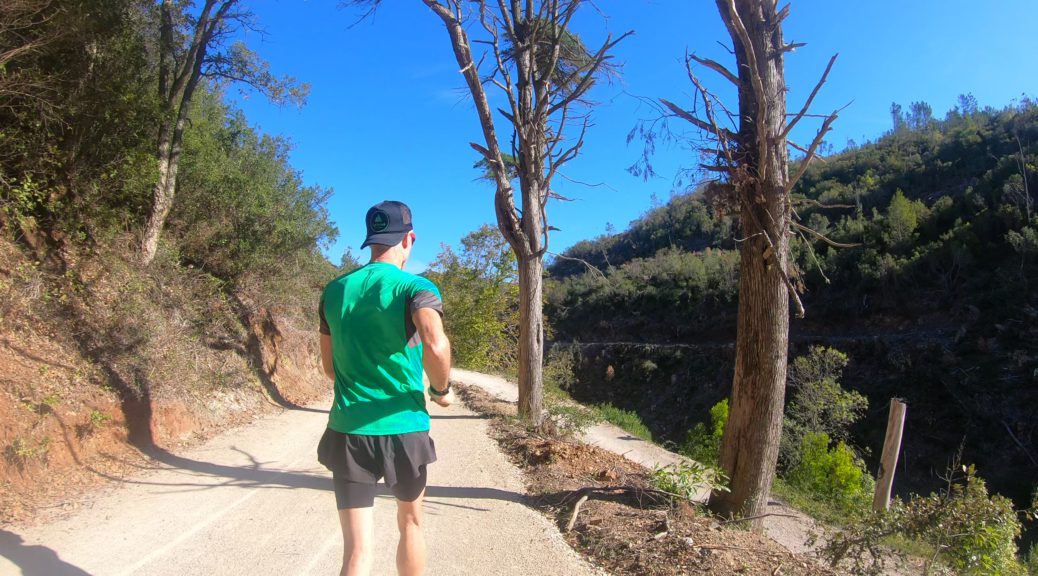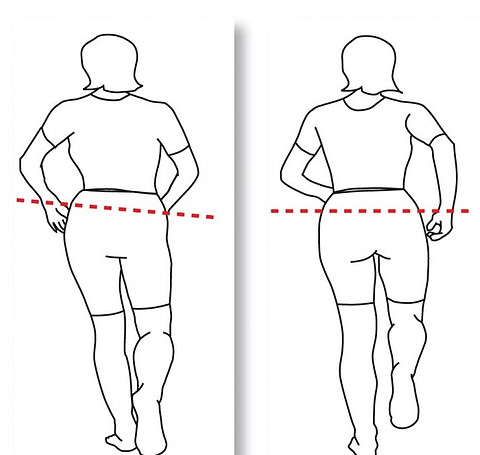
Hip Drop Running – How to Identify and Correct
Hip Drop
Hip drop running is one of the most common problems in the running community. Apart from making you go slower, it can be the reason behind so many different running injuries. I am going to go through how to identify and correct this problem to increase your running efficiency and help prevent associated injuries.
What Is Hip Drop?
Hip drop is also known as Trendelenburg gate. Named after Fredrich Trendelenburg, it is an abnormal gait when either walking or running, characterised by the hip ‘dropping’ during the gait as described below.
It is caused by a weakness of the abductor muscles of the lower limb, glute medius and the glute minimus. With a weakness in these muscles the hip will drop when full body weight is being supported on the opposing leg. This is known as the stance phase of the stride.
When the hip drops the body counter balances this weakness or instability with a shift of the pelvis to the side of the weakness to aid in stabilising the body.
In hip drop running, the pelvis is shifted to the side thus creating a leaning effect with the upper body.
Below the diagram on the left shows an example of a hip drop, with pelvis shifted off alignment and upper body counter balancing. The diagram on the right is a normal gait.

How to Assess Your Running Form
With the help of smartphones these days, it allows us to simply video ourselves (with help if needed) and play the footage in slow motion. Now to get good usable footage it is important to have a few things set up right.
Important Factors To Get Good Usable Footage For Assessment
Treadmill
If you have a treadmill or can use one, this is the easiest way.
Set up the phone in front or behind you so you have a good view of yourself running. (Note: it is good to get footage from the front and back to get a good assessment).
Make sure the treadmill is set on flat gradient, so you are not on an incline.
Now it is best if you have run for 15-20 minutes so you don’t press record on your phone and it records you bounding along like a gazelle. We want a little pre-fatigue to show you running in your normal gait and not putting on a one minute show for the camera.
If you can get someone to press record for you and let it record for about 5 minutes.
** Try and run normally so you get a correct assessment .
Flat Road Or Pavement
So when getting footage this way you definitely need help.
Find a very quiet area to do this and also someone that can ride directly behind you while filming you with the smartphone. Again, get them to start the filming 15-20 minutes into the run in slow motion setting. Preferably, not letting you know when they have pressed record.
Assessing Footage
Having the slow motion feature on your phone enables you to check out a number of things.
Foot – Are your feet landing relatively flat, with foot directly under your leg? Or is it drifting inward or outward?
Knee – Is your knee tracking straight? Or is it drifting inward or outward?
Hips – Are your hips staying relatively level? Or is the opposite hip to the leg that is on the ground dropping lower than the other?
Torso – Is your upper body staying relatively vertical to the ground and not leaning to the side? Or is it leaning to compensate the hip drop that that is happening?
Becoming aware of any of the above non–desirable attributes is the first step to becoming a more efficient injury–free runner.
What To Do If Your Hip Is Dropping?
The primary cause of hip drop running is a weakness of the abductor muscles, the glute medius and glute minimus.
Strengthening these two muscles along with working on core strength stability and hip activation will help you immensely.
Exercises
Single Leg Squat with Side Leg Lift
Laying Side Leg Lift
Clamshell with Side Plank
By investing some time into these exercises above, you will reap the rewards further down the track. Just running longer, harder or faster will not fix these weaknesses. It will load more stress onto the surrounding muscles that are over compensating for these weaker ones. Isolation of these weaker muscles through strengthening exercises will strengthen and develop them and therefore help to activate them when needed.
Related post: Exercises to Improve Running Form
For more core, glute and stabilisation exercises you can also check out the TrailRunEarth Instagram page where I regularly add in new videos. I cannot recommend this strengthening work more highly. It will not only have you running faster, stronger and longer but is the best way to remain injury free.
Happy Running,
Andrew.